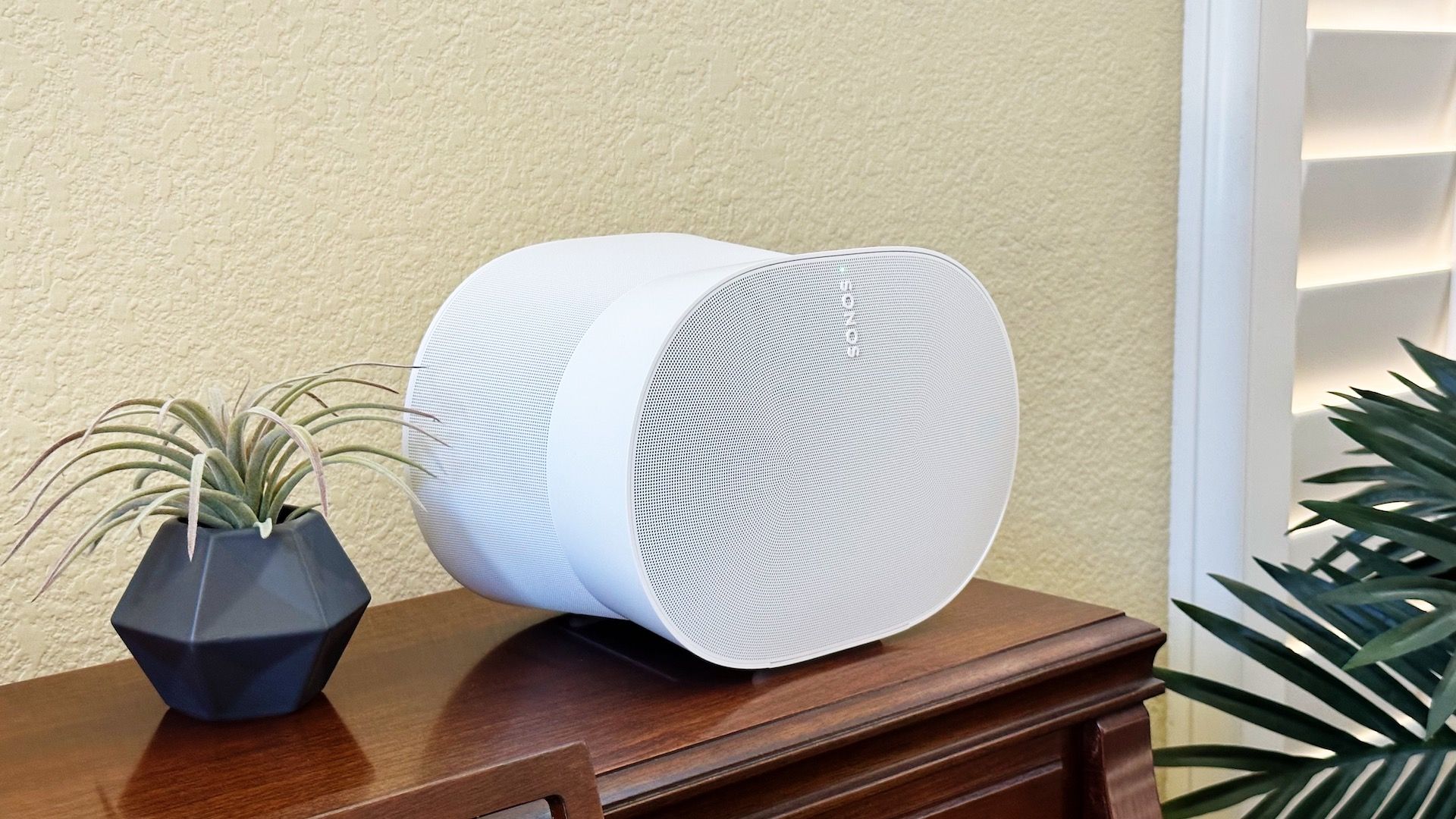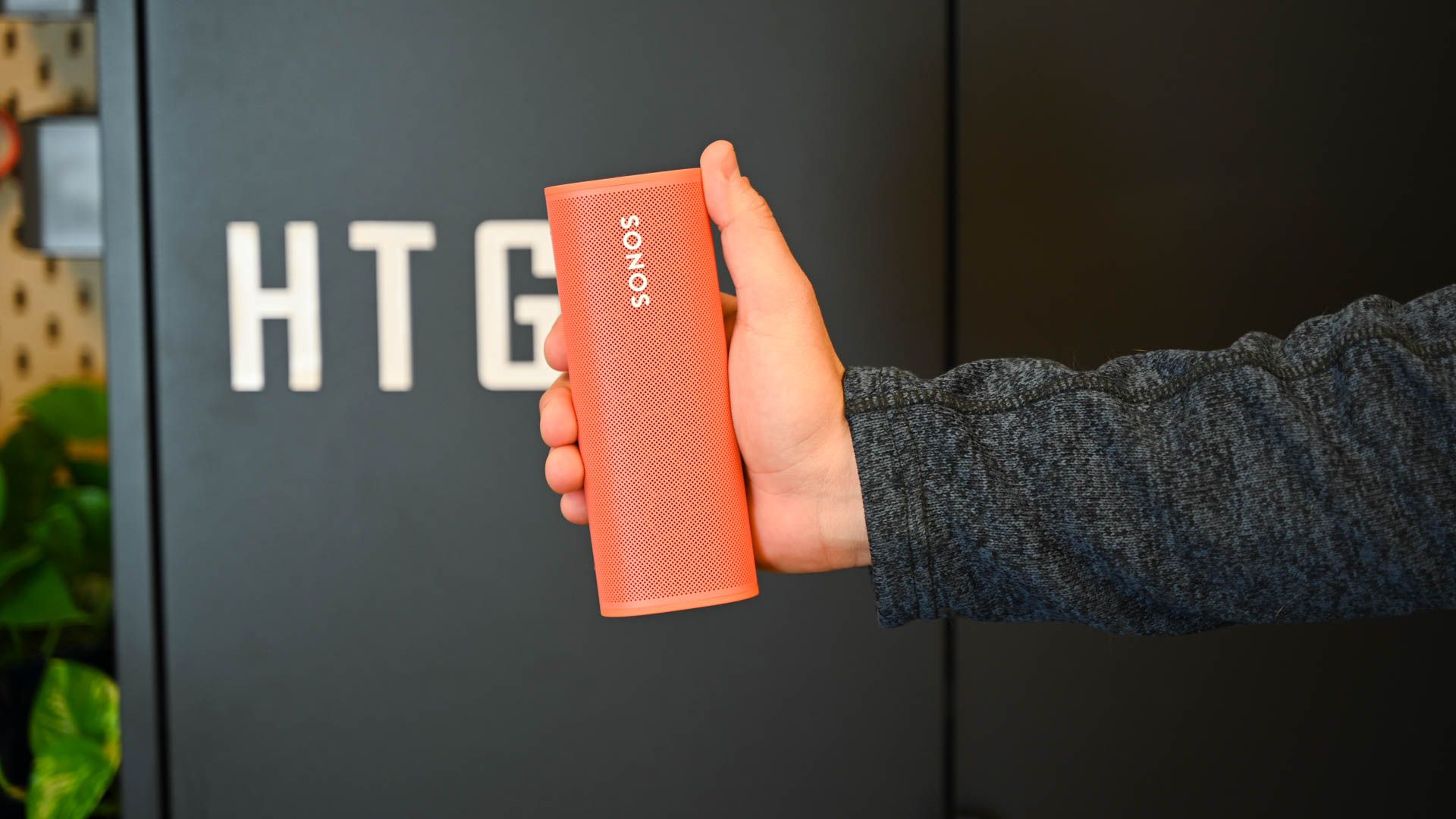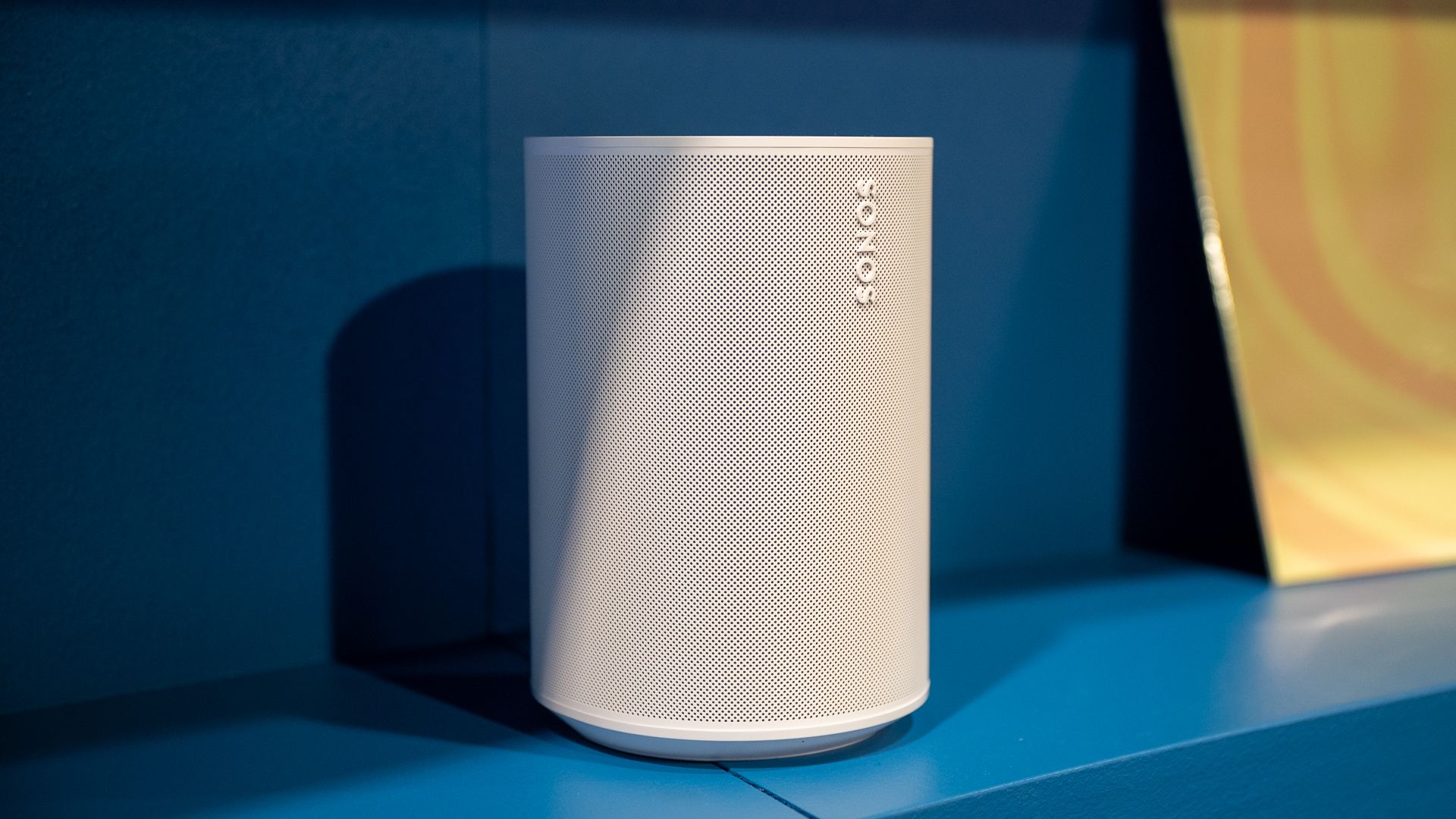Quick Links
Key Takeaways
Sonos Trueplay calibrates your Sonos speakers to sound good in your room. It requires the Sonos app on an iPhone or iPad; Trueplay doesn't work on Android. Some Sonos speakers, like the Sonos Roam, have automatic Trueplay and automatically calibrate themselves.
Proper audio design can be challenging, given how much stuff we cram into our homes. Sound waves are dynamic signals that bounce all over the place, so picking the ideal spot for your speakers can be quite the trial. Sonos gives you a hands-off approach to this task with its Trueplay feature.
What You Need to Know About Trueplay
Trueplay is software for Sonos speakers that calibrates them to sound good from anywhere in the room. This software is designed to analyze the features of a room; such as its size, layout, and furniture, so that your speakers can compensate for anything that will hinder the movement of the sound waves output by your speakers.
Is Sonos Trueplay Available on Android?
Sadly, Trueplay is not available for Android devices. As of April 2023, the Trueplay software only works with iPhones and iPads. This is due to Android devices having much greater variance in their microphones than Apple ones.
To calibrate audio with smartphones reliably, you need constant microphone quality across all mobile devices---otherwise, things won't sound right. Apple is in charge of all the hardware and software of their mobile devices, which results in better consistency, while Android allows third-party developers to take the reigns in those regards.
This is not favoritism towards Apple products---it's just the facts about the internal microphones across all mobile devices created by these tech titans.
Which Apple Devices Work With Trueplay?
For Trueplay, you need an Apple product with a microphone that runs on iOS 7 or later. You can use any modern iPhone, iPad, or even iPod Touch.
Furthermore, you'll only need such devices for a few minutes, as the Trueplay calibration doesn't take very long. If you don't have an Apple device, then ask a friend or family member who does to come over for a movie night or something along those lines.
Which Sonos Speakers Are Compatible with Trueplay?
Depending on the Sonos speaker or speakers you own, it may have manual or automatic Trueplay software. For manual Trueplay, you need to use an iPhone or iPad to calibrate your speakers. On top of that, the Trueplay feature may appear in the form of "Advanced Tuning" for some devices.
However, for the devices that have automatic Trueplay, you don't need to do anything besides set up said speakers.
Here's a list of all the Sonos speakers that are currently compatible with Trueplay:
- Sonos One
- Sonos One SL
- Sonos Five
- Sonos Play:1
- Sonos Play:3
- Sonos Play:5
- Sonos Playbar
- Sonos Playbase
- Sonos Beam
- Sonos Beam (Gen 2)
- Sonos Arc
- Sonos Ray
- Sonos Sub Mini
- Sonos Sub (Gen 3)
- Sonos Move (automatic Trueplay)
- Sonos Roam (automatic Trueplay)
- Sonos Era 100 (Trueplay via "Advanced Tuning")
- Sonos Era 300 (Trueplay via "Advanced Tuning")
How to Use Trueplay With Sonos Speakers and Soundbars
First off, the Sonos Roam and Sonos Move have Automatic Trueplay---which means they'll calibrate themselves once you set up the speakers. Follow the simple steps in the instruction manual for basic setup. No fuss, no muss!
However, to start tuning most of your other Sonos speakers with Trueplay, open the Sonos app on your iPhone or iPad. Afterward, follow these steps:
- Tap the Settings tab in the bottom-right corner
- Go into "System"
- Tap on the speaker you want to tune
- Tap on "Trueplay" under the "Sound" section
- Tap on "Trueplay Tuning"
- Tap "Continue"
- Tap "Begin Tuning"
After a short while (one to three minutes), the process will end. If you're in a quiet room, the tuning will most likely be successful. You're all set to enjoy the better sound quality!
How to Use Trueplay With Sonos Era 100 and Sonos Era 300 Speakers
With that said, things are a bit different for the Sonos Era 100 and Sonos Era 300 speakers. Those devices have their Trueplay function within their "Advanced Tuning" option. Be sure to watch the short tutorial on the Sonos app for extra help.
Follow these steps to complete advanced tuning for the Sonos Era 100 and Sonos Era 300 devices:
- Tap the Settings tab in the bottom-right corner
- Go into "System"
- Tap on the speaker you want to tune
- Tap on "Trueplay" under the "Sound" section
- Tap on "Trueplay Tuning"
- Tap "Get Started"
- Tap "Advanced Tuning"
- Position your speaker(s) where you want them
- Make the room as quiet as possible while Trueplay is doing its calibrations (otherwise, the process will fail and you'll have to try again)
- Grant access to your iOS device's microphone (make sure there's no case on your iOS device, as this can hinder the audio tests)
- Hold your iOS device so that its microphone is facing upward (so that the test sounds can be emitted properly)
- Tap "Start"
- Walk around the room slowly while gently moving your iOS device up and down while it emits the test sounds (this should only take around 45 seconds)
Some devices require you to do the above process as well as a variant test where you're sitting in a specific spot. This is true for the Sonos Playbar, Sonos Playbase, Sonos Ray, Sonos Beam, Sonos Beam (Gen 2), and Sonos Arc. Once you're done, plop yourself down in a comfy spot and enjoy the fruits of your labor!
The Difference Between Advanced Tuning and Quick Tuning
On Sonos Era 100 and Sonos Era 300 devices, there is a "Quick Tuning" option next to the "Advanced Tuning" one that encompasses the Trueplay function. Quick Tuning is not as precise as Trueplay tuning and should only be used if you need to do a simple test.
If you've moved any of your speakers or changed what room they are in, we recommend that you use Trueplay tuning to recalibrate for the best sound quality. Although, if you've only moved one piece of furniture or accidentally nudged a speaker (or something along those lines), using Quick Tuning should be fine for checking the audio.
Here's what actually happens when you select "Quick Tuning": your iPhone or iPad emits test sounds for 30 seconds. You don't need to walk around and wave your device; just make sure the room is as quiet as possible for the duration of the process.
Does Sonos Trueplay Work, and Is it Worth it?
If you don't have a room that's specifically designed for acoustics (like a recording studio in your basement or something like that), Trueplay is definitely worth it. Many Sonos users agree that it increases the sound quality when they listen to music or watch movies and TV shows.
This is due to Trueplay taking objects in the room into consideration so that the sound waves travel optimally. Normally, sound waves can be partially blocked by objects, however, Trueplay can compensate for this by sending those sound waves around said obstructions.
To check the difference for yourself, you can toggle Trueplay on and off. By comparing how things sound with and without Trueplay, you can judge for yourself whether or not your room needs the added audio adjustments.



